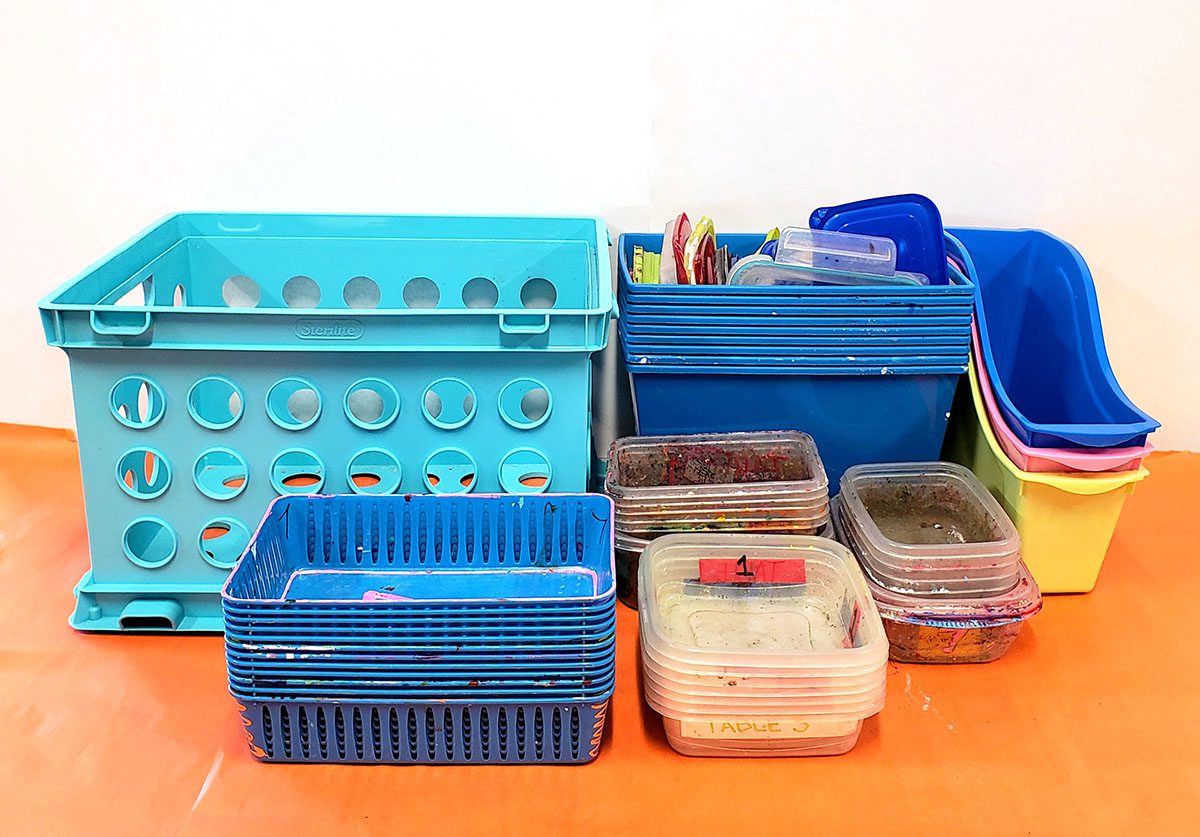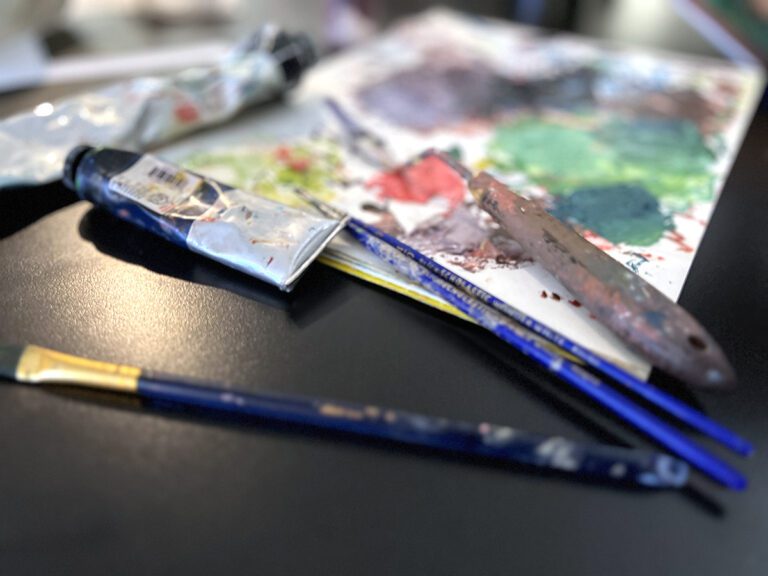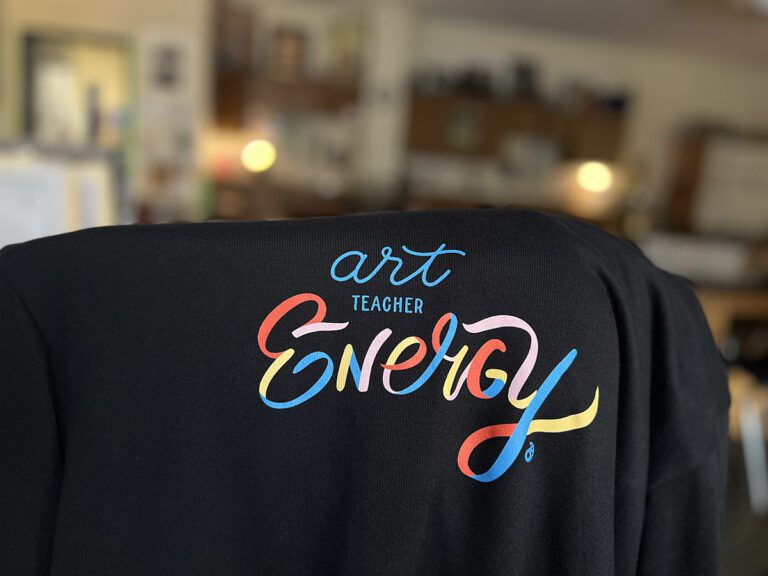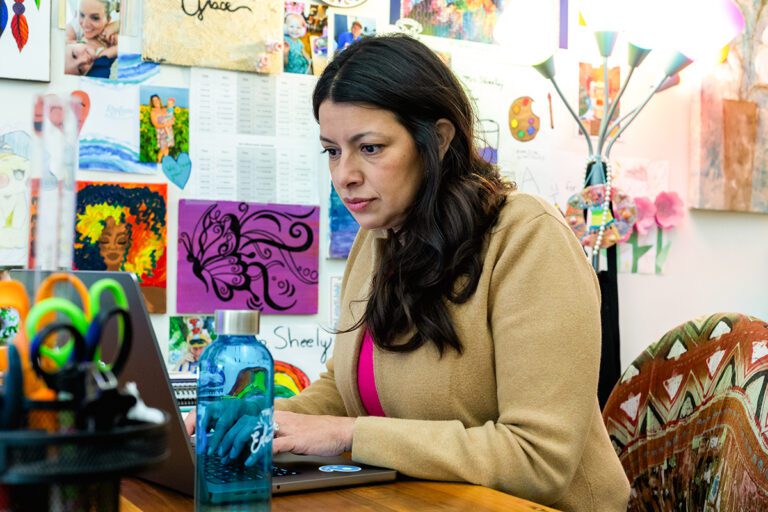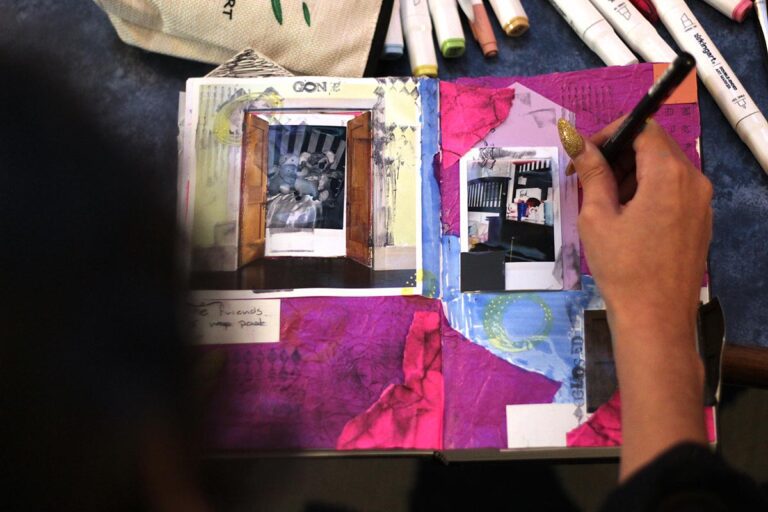As summer dwindles away, do you find yourself panicking—thinking about all of the things you should have done to prepare for the school year? Prevent the panic from happening again, and set yourself up for success now. It may feel too early to start thinking about the next school year, but it’s the perfect time to think about changes! Your experiences throughout the past year are fresh in your mind, allowing you to reflect accurately.
Do these eight things now to set yourself up for success next school year.
1. Implement boundaries and self-care.
Teaching is an emotional job. Maintaining your emotional health is difficult but necessary to be good at what you do. If you’ve found yourself challenged emotionally this year, start building healthy boundaries and habits now. It takes 66 days to make a habit automatic. So building healthy habits and boundaries now will make you a pro at them by the start of next school year!
To determine what you need to change, ask yourself if you’ve taken on too much. Are there things you can say “no” to next year? What habits can you implement to preserve your mental energy and manage your stress? If you’re struggling to find a healthy way to balance your emotions and what’s on your plate, check out the course The Rejuvenated Teacher. It will provide you with the necessary tools to maintain your emotional health next year.
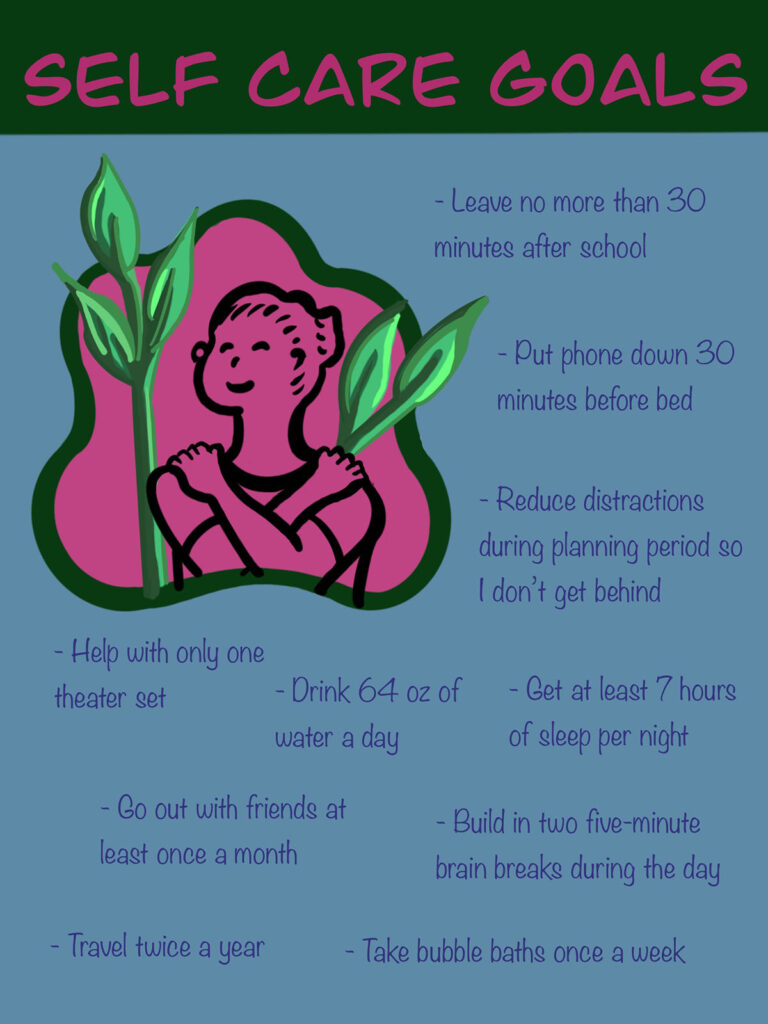
2. Think about relationship building.
Relationship building leads to trust, confidence, and improved classroom management. It’s never too early to start thinking about new ways to build relationships with your future students! Consider what would have made relationship-building with your current students easier.
Here are six ways to prepare for relationship-building with your future students:
- Visit future students.
Take the time to visit students who may take your class next year. For example, if you teach advanced art courses, ask the teacher’s permission to visit with foundation students. Sit and chat with them, make art with them, and encourage them to take your class next year. Although it may take a little of your planning time now, it will pay off big time next year! - Research students’ interests.
While your students next year may have some different interests than this year’s students, the likelihood is that many will remain the same. What shows, games, or places are your students interested in? Talking to students about their interests is the easiest way to build relationships and make connections with them. - Get students’ advice on classroom decor.
Get advice from this year’s students on how to decorate your room next year. While you need to enjoy your room’s aesthetics, it should be an appealing space for your students as well. You can even turn it into a year-end project where students submit designs for your room! - Invest in name tags.
One of the easiest ways to make students feel seen and known is by calling them by their names. However, this can be difficult because art teachers often have hundreds of students. Set up a system for name tags. Invest in clear, plastic name tags that students can write their names on with dry-erase markers and clip to their shirts. The next class can reuse the same nametags. - Print out get-to-know-you surveys.
Get to know students’ likes, dislikes, and personalities with a student survey. Download this one for free. Go ahead and print enough out now. Hole punch them so you can keep the completed forms in a binder to quickly reference throughout the year. If students are having behavioral problems, glance at their student survey to see if there’s information you can use to engage and connect with them during class. Check out some other ways to build rapport with your students in this article. - Plan get-to-know-you games.
Plan a get-to-know-you game like this one. It’s never too late to try them out with your current classes to see how they’ll go. It’s also a good chance to see if you want to make any changes before implementing them at the beginning of next school year.
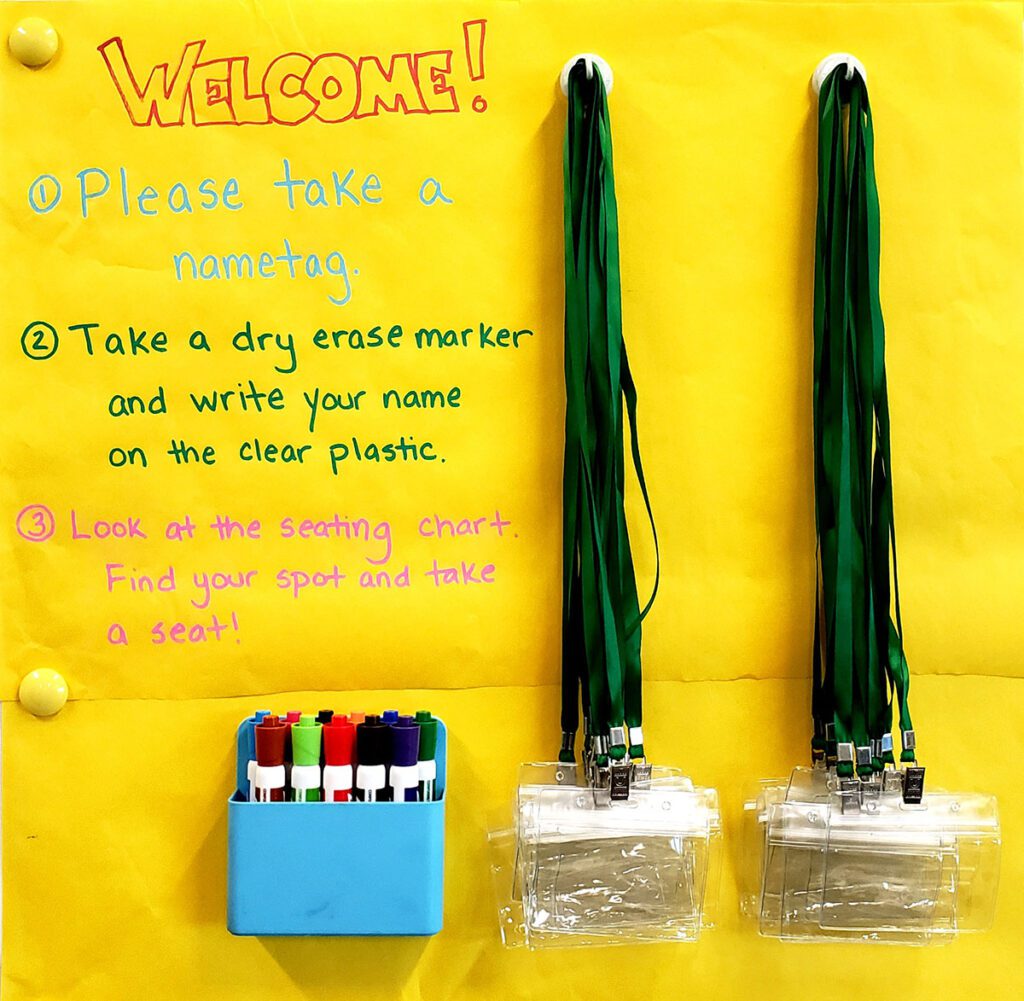
3. Review your curriculum.
Evaluate your curriculum while the details of your school year are fresh. What lessons or projects went well? What can you change to increase engagement or understanding? What concepts or techniques did your students struggle with? What scaffolding or extra support can you incorporate next year? Go through each unit and make notes about what will benefit your future students and what will make your life simpler. Your future self will thank you!
If you need guidance while revising your curriculum, check out these five resources:
- Intentional Curriculum Design Graduate Course
- Building Blocks of Effective Curriculum Pack in PRO Learning
- Designing Your Art Curriculum Graduate Course
- “What Do New Teachers Need to Know About Curriculum (Ep. 299)”
- What to Look for in an Art Curriculum
4. Line up guest speakers.
In the hustle and bustle of the school year, lining up guest speakers is often low on the priority list. Start now by asking professionals you think your students will benefit from. Make a list of people you’ve met this year who would be willing to come and talk about what it takes to succeed in their creative field. Who can you reach out to and build connections with now? Check out the article A Quick and Easy Way to Bring Local Artists Into Your Art Room for tips about hosting guest speakers.
Here are three places you can find great guest speakers:
- Local Visual Arts Guild or Council
What is one organization where many local artists come together and network? Tapping into your local arts council is an easy way to meet others passionate about the visual arts and your community. - Colleagues
Art teachers are often practicing artists. Make a deal with another teacher in your district: if they come talk to your class, you’ll go talk to theirs! - Social Media
Do you have a favorite artist on social media? Send them a direct message asking them to talk to your class. If they aren’t local, technology makes it easy to host them as a virtual guest speaker.
5. Clean out your classroom.
Art teachers tend to hoard random supplies. Don’t worry—it’s a good thing! Art educators teach students to take whatever supplies are available and transform them into beautiful works of art. However, too many supplies and not enough space can overwhelm anyone. Clear out space now so your art room feels lighter next year. Toss, gift, donate, or intentionally use up items before you head out for the summer.

6. Order ahead.
Once you’ve gotten rid of unnecessary supplies, add supplies you know you will need next year to your order list. If your budget and school procedures allow, place your order now. Ordering now can save you the headache of delayed shipments in the fall. Out of the materials you already have, gather and prep the supplies students will use in the first week of school in one easy-to-access spot. No rummaging and digging in the back-to-school scramble!
7. Rethink your supply organization.
Art room organization constantly shifts based on the type and quantity of supplies on hand. This constant flux can become a source of frustration since it’s difficult to avoid reorganizing throughout the school year. The cabinet that held certain supplies last month may need to be repurposed for different supplies once a new supply order comes in. Or space in a drawer may open up after students use its supplies for a project.
Think about the previous year and the changes you’ve made to your classroom organization. If there are specific areas you had to rework several times throughout the year, troubleshoot ways to prevent it next year. Do you need to swap classroom zones? Would purchasing smaller buckets or stackable clear bins help maximize storage space? Is there a spot where you can store extra bins or baskets for quick mid-year organization needs?
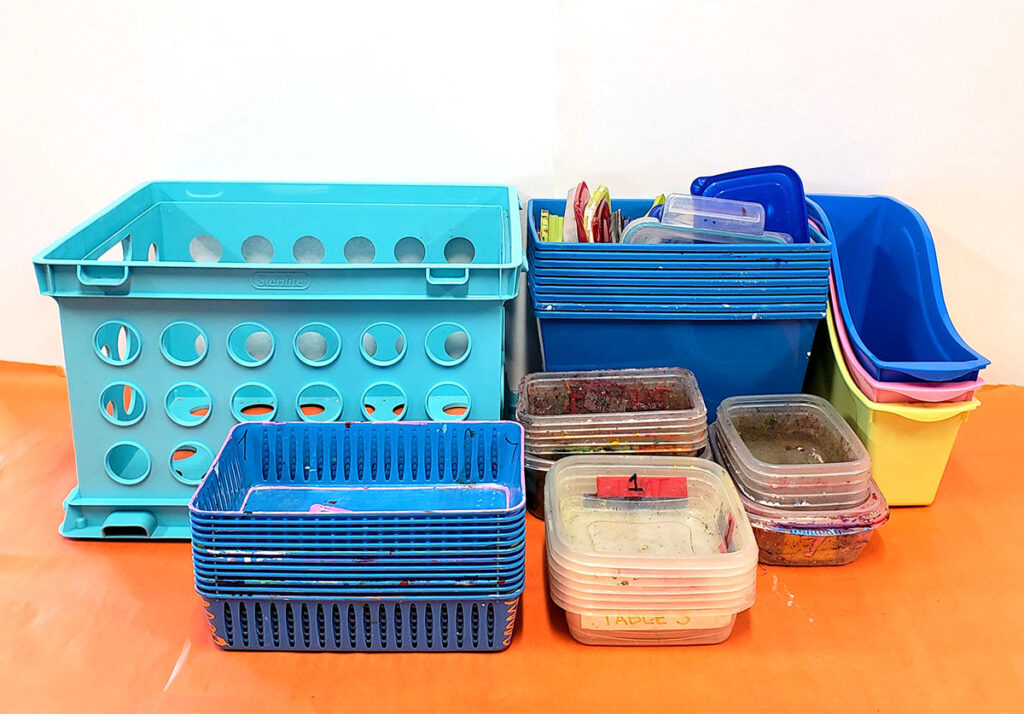
Here are three resources to guide you through reorganizing your classroom:
- “What Do New Teachers Need to Know About Organization? (Ep. 309)”
- 21 Fabulous Tips and Tricks to Match Your Art Room Organization Style
- Organizing Your Elementary Art Room for Success Pack in PRO Learning
8. Refresh your labels.
Your classroom likely started the year feeling fresh, new, and organized. By the end of the school year, labels are fading, floor spots are peeling up, and everything has started to feel a bit disheveled. After reviewing and revising your classroom organization, refresh the labels.
Consider these five ideas when refreshing your labels:
- Use a consistent and legible font.
- Add simple pictures next to the corresponding text.
- Consider larger fonts for general areas, like Painting Center, and smaller labels for individual supplies, like Round Brushes.
- Laminate or cover labels in packing tape.
- Adhere using a hook-and-loop fastener instead of tape.
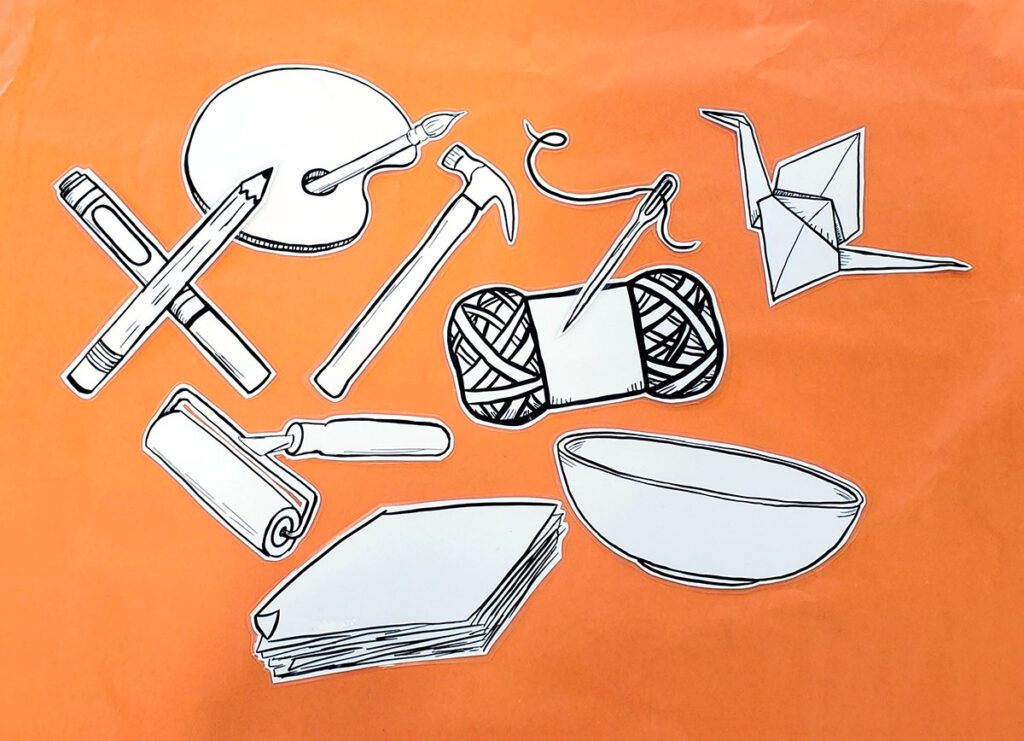
Take the time now to prepare physically and emotionally for next year. While your experiences throughout the year are fresh, evaluate your curriculum’s strengths and weaknesses. Go the extra mile and add some guest speakers to the mix while you have the time. Prepare your classroom by cleaning it out and rethinking organization, including refreshing your labels. Prep relationship-building tools and implement boundaries and self-care so you have time to build them into a habit. Your future self will thank you for all the hard work you’re putting in today!
What do you do at the end of the school year to prepare for the following year?
How does reflection help you become a better teacher?
Magazine articles and podcasts are opinions of professional education contributors and do not necessarily represent the position of the Art of Education University (AOEU) or its academic offerings. Contributors use terms in the way they are most often talked about in the scope of their educational experiences.
